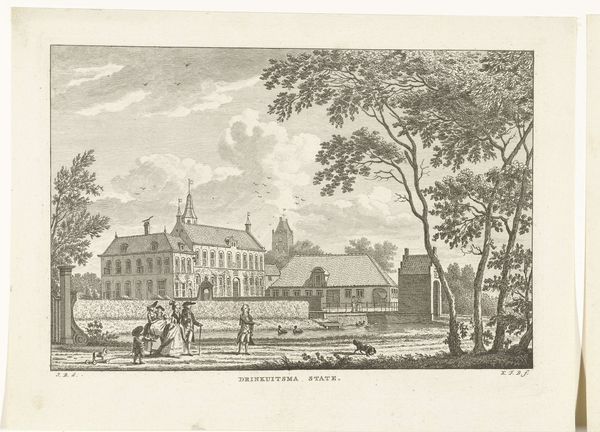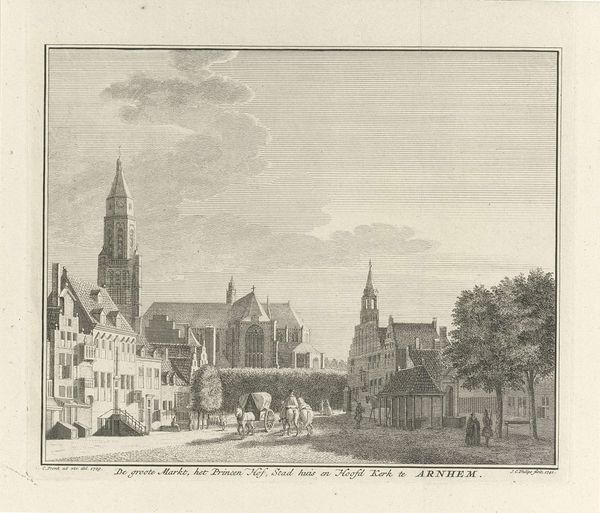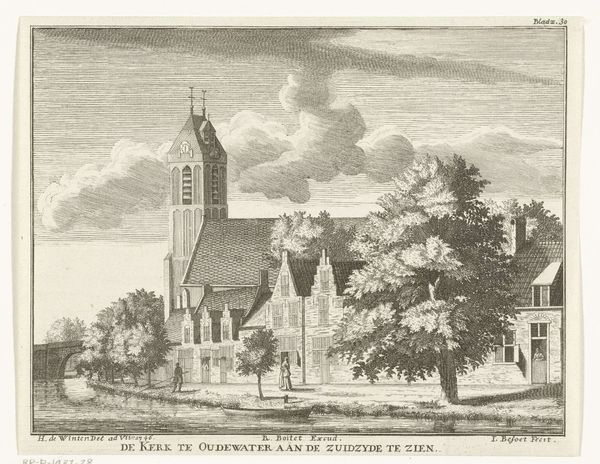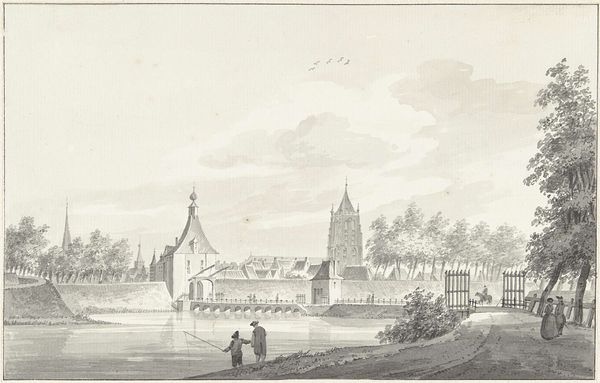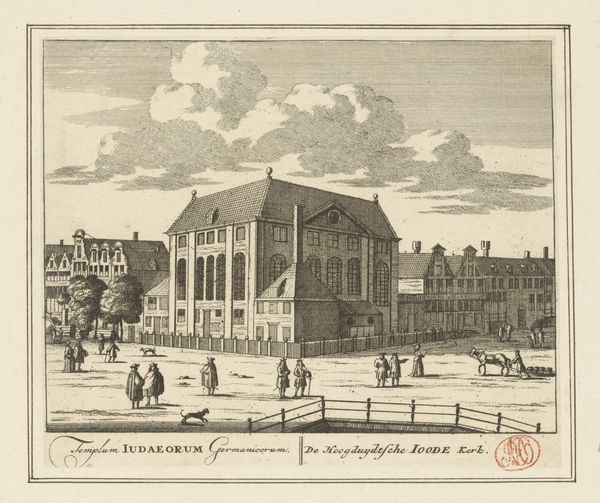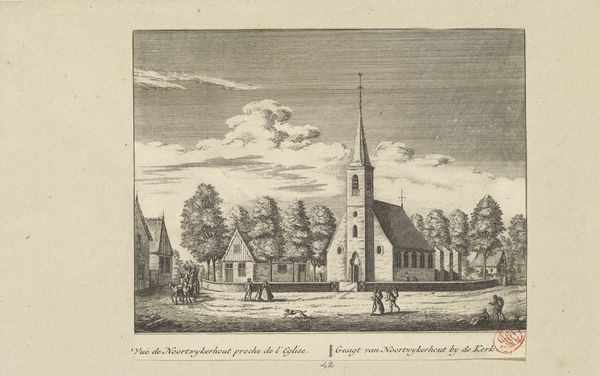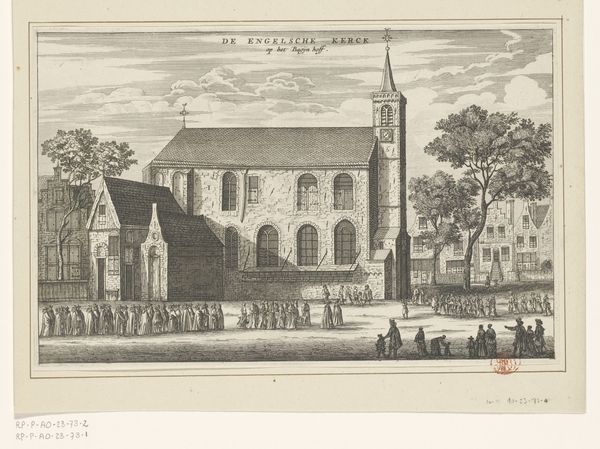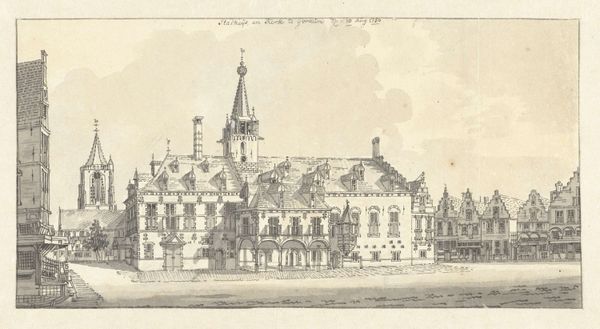
Dimensions: height 165 mm, width 210 mm
Copyright: Rijks Museum: Open Domain
Curator: Welcome! Here we have Hendrik Spilman's "View of the Town Hall in Rhenen," an engraving dating back to 1774. Editor: It feels very…stately. Dignified, even. There’s a deliberate air to the composition; everything appears orderly and carefully rendered. Curator: It's fascinating to consider how Spilman’s technique shapes our perception. As a print, its creation relies heavily on skilled labor—the artisan meticulously carving lines into the plate. What sort of tools and workshops made this level of replication possible in 1774? It’s not just an image of Rhenen, but an artifact born from a specific system of production and dissemination. Editor: I'm immediately drawn to that prominent clock tower. Consider how clocks, time, became powerful symbols, shaping social life and cultural rhythms. That imposing tower broadcasts temporal authority, structuring daily life for the townspeople. And the horse-drawn carriages—a clear emblem of a rising middle class on the move. It is an assertion of burgeoning commerce! Curator: Precisely! That sense of "progress" relies on complex economies. The very paper used—its source materials, trade routes—everything is interconnected. It’s not just about what Spilman depicted, but how his artwork became a commodity circulating within broader economic structures. I mean, look at those repetitive windows of the town hall. They evoke mass-produced items of this Rococo moment, extending aesthetics into furniture and beyond. Editor: Rococo cityscapes usually focus on pleasure and pastimes. Here Spilman elevates the town hall as an almost godly figure through visual dominance. This isn’t simply documenting a place; he elevates it into an emblem of civic pride, with his clever emphasis of symbols over reality. This engraving reminds viewers to adhere to this specific established cultural memory. Curator: Yes, that connection of progress, material conditions, the buildings' social utility...it gives a new context to the city. Thanks for taking me there. Editor: A wonderful exchange—each line etched within this print whispers volumes.
Comments
No comments
Be the first to comment and join the conversation on the ultimate creative platform.
